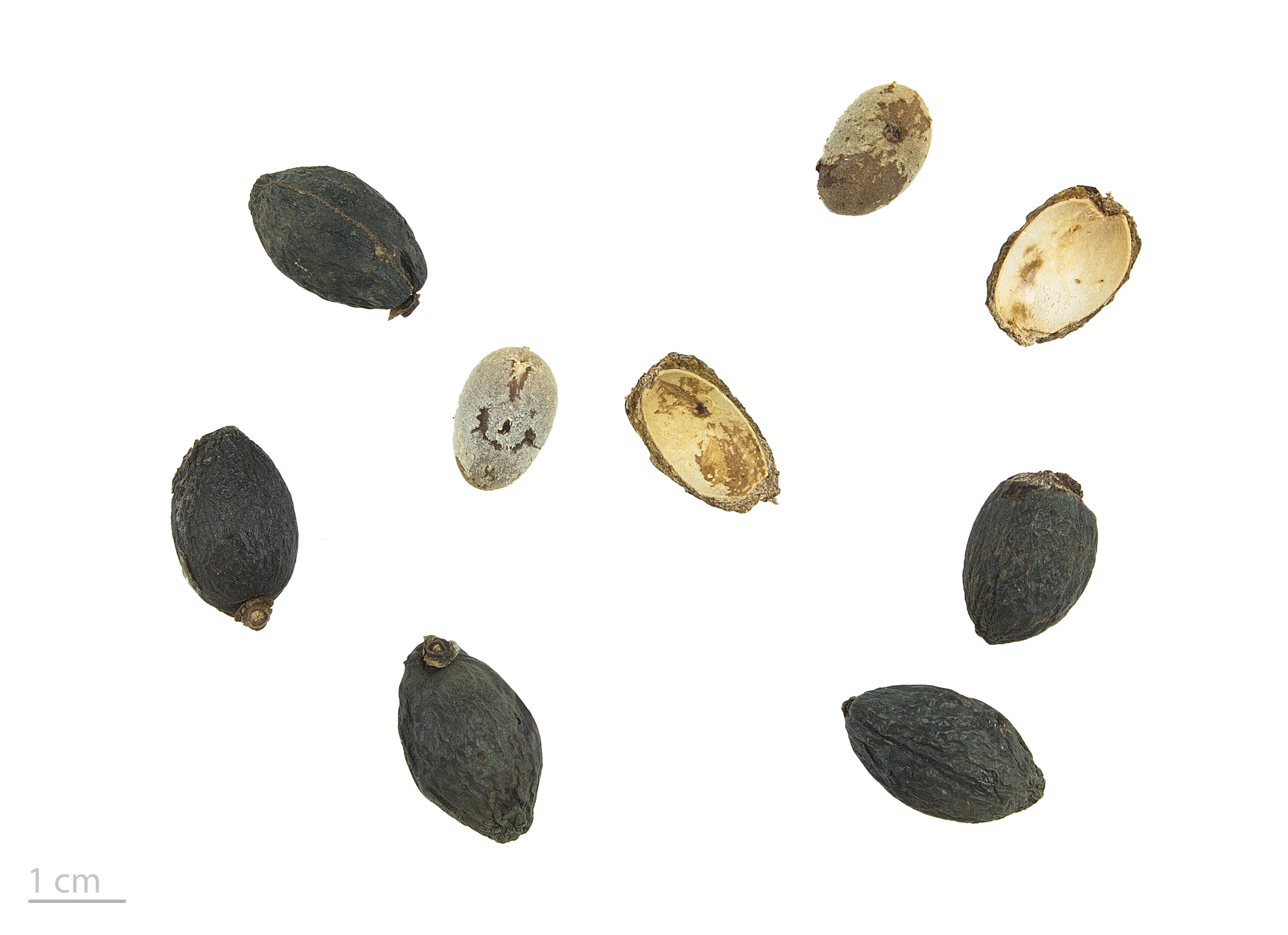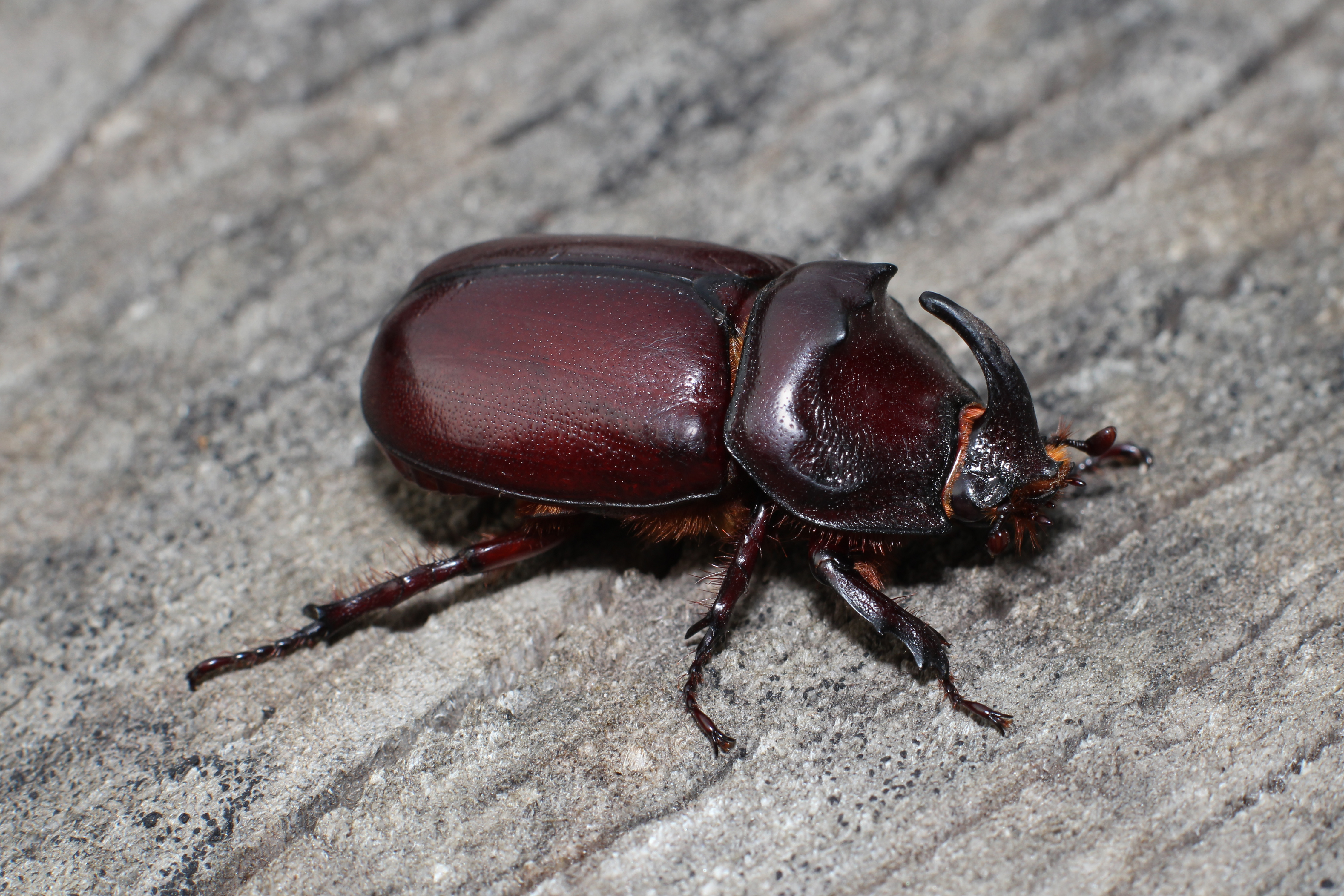|
Megasoma Anubis
''Megasoma anubis'' is a species of beetles belonging to the family Scarabaeidae. Description ''Megasoma anubis'' can reach a length of about (including horn). These large and heavy beetles are black but they have a soft, velvety surface, as they are densely covered with a yellowish-grey dust. Males are much larger than females and have a medium length and curved horn on the head. On pronotum there is a short median horn. Females lack horns. The legs are relatively long with sharp claws.M. R. MoorKey to Adult Males and Females of the Genus Megasoma/ref> These beetles are considered a pest. The larvae live and develop in 1–2 years. They feed on the inflorescence of the Chinese fan palm (''Livistona chinensis ''Livistona chinensis'', the Chinese fan palm or fountain palm, is a species of subtropical palm tree of east Asia. It is native to southern Japan, Taiwan, the Ryukyu Islands, southeastern China and Hainan. In Japan, two notable populations occ ...''). Adults mainly ... [...More Info...] [...Related Items...] OR: [Wikipedia] [Google] [Baidu] |
Louis Alexandre Auguste Chevrolat
Louis Alexandre Auguste Chevrolat was a French entomologist, born 29 March 1799 in Paris and died 16 December 1884 in Paris. In government service in Paris, this amateur entomologist studied mainly beetles and birds. He published nearly 250 notes and papers and was the author of more than 2,000 species. He was one of the founders of the Société entomologique de France in 1832. On his death, his collection was dispersed. Part of his collection is now in the Natural History Museum in London along with some manuscripts. Works (Selection) * 1833a. Description de Buprestis analis. ''Magasin de Zoologie'' 1833. Insectes, Nr. 60, 1 color plat* 1833b. ''Coléoptères du Mexique'', Fascicle 5 pp. Oct. 1833. Strasbourg. * 1834. ''Coléoptères du Mexique'', Fascicle 0 pp. Mar. 1834; Fascicle 8 pp. Nov. 1834. Strasbourg. * 1835. ''Coléoptères du Mexique'', Fascicle 0 pp. Jan. 1835; Fascicle 8 pp. Jan. 1835; Fascicle 8 pp. June 1835; Fascicle 6 pp. July 1835. Fascicle 8 pp. 8 ... [...More Info...] [...Related Items...] OR: [Wikipedia] [Google] [Baidu] |
Francis De Laporte De Castelnau
Francis may refer to: People *Pope Francis, the head of the Catholic Church and sovereign of the Vatican City State and Bishop of Rome *Francis (given name), including a list of people and fictional characters *Francis (surname) Places * Rural Municipality of Francis No. 127, Saskatchewan, Canada * Francis, Saskatchewan, Canada **Francis (electoral district) * Francis, Nebraska *Francis Township, Holt County, Nebraska * Francis, Oklahoma *Francis, Utah Other uses * ''Francis'' (film), the first of a series of comedies featuring Francis the Talking Mule, voiced by Chill Wills *''Francis'', a 1983 play by Julian Mitchell *FRANCIS, a bibliographic database * ''Francis'' (1793), a colonial schooner in Australia *Francis turbine, a type of water turbine *Francis (band), a Sweden-based folk band * Francis, a character played by YouTuber Boogie2988 See also *Saint Francis (other) *Francies, a surname, including a list of people with the name *Francisco (other) *Franci ... [...More Info...] [...Related Items...] OR: [Wikipedia] [Google] [Baidu] |
Beetle
Beetles are insects that form the order Coleoptera (), in the superorder Endopterygota. Their front pair of wings are hardened into wing-cases, elytra, distinguishing them from most other insects. The Coleoptera, with about 400,000 described species, is the largest of all orders, constituting almost 40% of described insects and 25% of all known animal life-forms; new species are discovered frequently, with estimates suggesting that there are between 0.9 and 2.1 million total species. Found in almost every habitat except the sea and the polar regions, they interact with their ecosystems in several ways: beetles often feed on plants and fungi, break down animal and plant debris, and eat other invertebrates. Some species are serious agricultural pests, such as the Colorado potato beetle, while others such as Coccinellidae (ladybirds or ladybugs) eat aphids, scale insects, thrips, and other plant-sucking insects that damage crops. Beetles typically have a particularly hard e ... [...More Info...] [...Related Items...] OR: [Wikipedia] [Google] [Baidu] |
Scarabaeidae
The family Scarabaeidae, as currently defined, consists of over 30,000 species of beetles worldwide; they are often called scarabs or scarab beetles. The classification of this family has undergone significant change in recent years. Several subfamilies have been elevated to family rank (e.g., Bolboceratidae, Geotrupidae, Glaresidae, Glaphyridae, Hybosoridae, Ochodaeidae, and Pleocomidae), and some reduced to lower ranks. The subfamilies listed in this article are in accordance with those in Bouchard (2011). Description Scarabs are stout-bodied beetles, many with bright metallic colours, measuring between . They have distinctive, clubbed antennae composed of plates called lamellae that can be compressed into a ball or fanned out like leaves to sense odours. Many species are fossorial, with legs adapted for digging. In some groups males (and sometimes females) have prominent horns on the head and/or pronotum to fight over mates or resources. The largest fossil scaraba ... [...More Info...] [...Related Items...] OR: [Wikipedia] [Google] [Baidu] |
Livistona Chinensis
''Livistona chinensis'', the Chinese fan palm or fountain palm, is a species of subtropical palm tree of east Asia. It is native to southern Japan, Taiwan, the Ryukyu Islands, southeastern China and Hainan. In Japan, two notable populations occupy islands near the coast of Miyazaki Prefecture, Aoshima and Tsuki Shima. It is also reportedly naturalized in South Africa, Mauritius, Réunion, the Andaman Islands, Java, New Caledonia, Micronesia, Hawaii, Florida, Bermuda, Puerto Rico and the Dominican Republic. ''Livistona chinensis'' can attain heights of about and a spread of . The leaves are fan shaped. Cultivation The palm is cultivated as an ornamental tree in gardens and conservatories. It is hardy in USDA zones 9-11, tolerating temperatures down to about 22° Fahrenheit/-6° Celsius. This plant can become a weed, or in some ecosystems an invasive species, in places such as Bermuda, Hawaii, Florida wetlands and on some Caribbean Islands Almost all of the Caribbean isla ... [...More Info...] [...Related Items...] OR: [Wikipedia] [Google] [Baidu] |
Dynastinae
Dynastinae or rhinoceros beetles are a subfamily of the scarab beetle family (Scarabaeidae). Other common names – some for particular groups of rhinoceros beetles – include Hercules beetles, unicorn beetles or horn beetles. Over 1500 species and 225 genera of rhinoceros beetles are known. Many rhinoceros beetles are well known for their unique shapes and large sizes. Some famous species are, for example, the Atlas beetle (''Chalcosoma atlas''), common rhinoceros beetle (''Xylotrupes ulysses''), elephant beetle (''Megasoma elephas''), European rhinoceros beetle (''Oryctes nasicornis''), Hercules beetle (''Dynastes hercules''), Japanese rhinoceros beetle or ''kabutomushi'' (''Allomyrina dichotoma''), ox beetle (''Strategus aloeus'') and the Eastern Hercules beetle (''Dynastes tityus''). Description and ecology The Dynastinae are among the largest of beetles, reaching more than in length, but are completely harmless to humans because they cannot bite or sting. So ... [...More Info...] [...Related Items...] OR: [Wikipedia] [Google] [Baidu] |
Insects Of Brazil
Insects (from Latin ') are pancrustacean hexapod invertebrates of the class Insecta. They are the largest group within the arthropod phylum. Insects have a chitinous exoskeleton, a three-part body (head, thorax and abdomen), three pairs of jointed legs, compound eyes and one pair of antennae. Their blood is not totally contained in vessels; some circulates in an open cavity known as the haemocoel. Insects are the most diverse group of animals; they include more than a million described species and represent more than half of all known living organisms. The total number of extant species is estimated at between six and ten million; In: potentially over 90% of the animal life forms on Earth are insects. Insects may be found in nearly all environments, although only a small number of species reside in the oceans, which are dominated by another arthropod group, crustaceans, which recent research has indicated insects are nested within. Nearly all insects hatch from eggs. Insect ... [...More Info...] [...Related Items...] OR: [Wikipedia] [Google] [Baidu] |
Endemic Insects Of Brazil
Endemism is the state of a species being found in a single defined geographic location, such as an island, state, nation, country or other defined zone; organisms that are indigenous to a place are not endemic to it if they are also found elsewhere. For example, the Cape sugarbird is found exclusively in southwestern South Africa and is therefore said to be ''endemic'' to that particular part of the world. An endemic species can be also be referred to as an ''endemism'' or in scientific literature as an ''endemite''. For example '' Cytisus aeolicus'' is an endemite of the Italian flora. '' Adzharia renschi'' was once believed to be an endemite of the Caucasus, but it was later discovered to be a non-indigenous species from South America belonging to a different genus. The extreme opposite of an endemic species is one with a cosmopolitan distribution, having a global or widespread range. A rare alternative term for a species that is endemic is "precinctive", which applies to s ... [...More Info...] [...Related Items...] OR: [Wikipedia] [Google] [Baidu] |





.jpg)